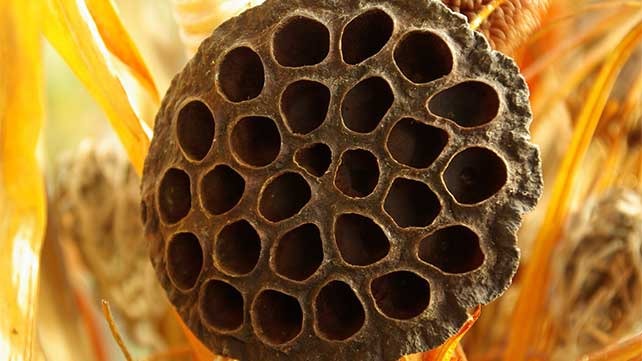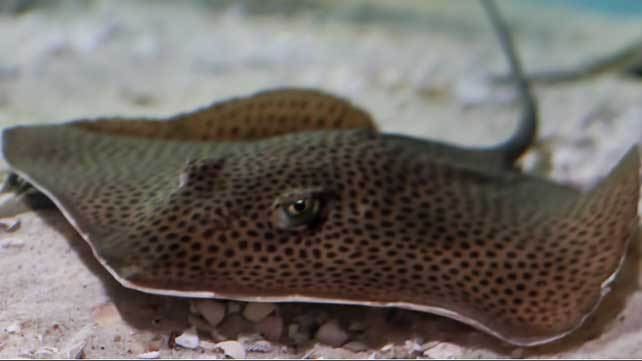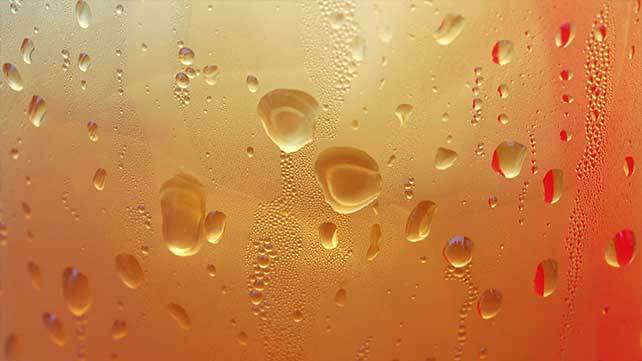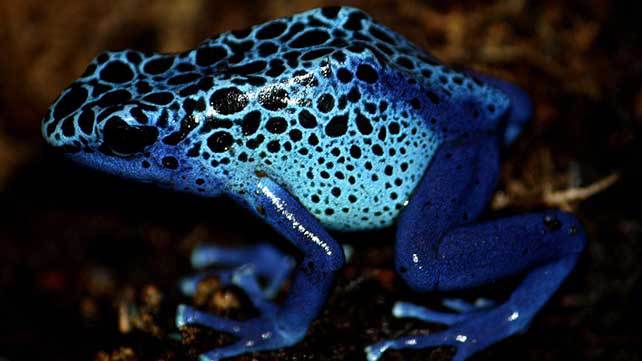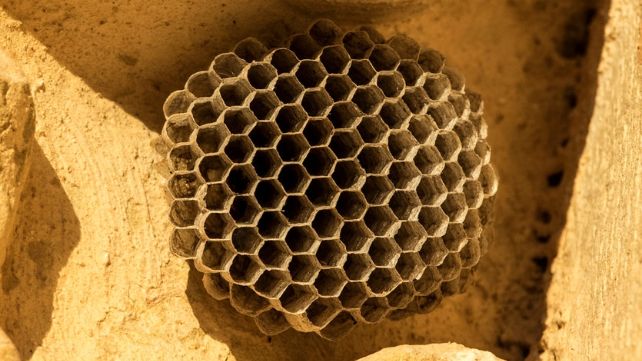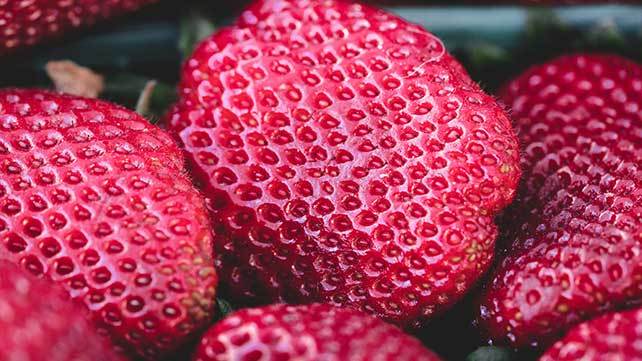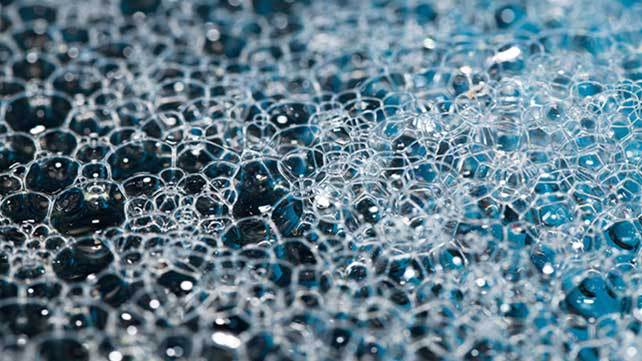TRYPOPHOBIA: Sometimes human fears get really bizarre forms. An example of this unusual fear is tryphophobia. Of course, trypophobia is much more than common fear.
The word phobia itself means that this fear is uncontrollable, very intense and actually destroys the life of man, from the phobia of the sufferer.
In medicine, it’s still debating whether the phobia is completely called a disease? Such a discussion has not passed this situation.
However, people’s reaction to phobia is in favor of the fact that there are signs of a phobic disorder. This is more detailed below.
The term was first introduced to medical practice in 2004. trypophobia is a fear of so-called clusters of holes (fear of small holes on the body, other objects).
Cluster openings are small repeating holes on a small surface. The most common things for a man, such as a sponge or a coral, cause the real horror of trypophobia.
Table of Contents
CAUSES OF TRYPOPHOBIA:
Study of this fear, such as fear of holes by University Of Essex. Researcher Jeff Cole and Arnold Wilkins gave special attention to the reasons for this reaction.
In his article, he focused on the fact that terror response gives bear so many signs of real fear as a strong disgust.
The condition of the phobia is characterized by the most influential changes in the ordinary way of life, so it is quite natural that a person suffering from such fears wants to find their cause and remove it.
There is no unanimous opinion of the reasons for this, and many researchers question the existence of such a phobia.
A vibrant emotional and physiological response to numerous holes is usually due to the holes.
- => In living tissues of animals and humans, rash (acne, demodectic rash), acne scarring, skin necrosis of the skin with openings, openings of many glands.
- => small repetitive holes in food, such as honeycomb, holes in the bread, pasta, coffee foam.
- · On plants (lotus seed pod) – seeds, algae, fungal structure.
- · Natural geological cavities and porous rocks.
- · Tunnel tunnels dug by animals and insects.
Back to Cole and Wilkins research , it was evident that the phobia of holes caused by the initial fear of being a part of evolution. It is our brain that historically connects such holes with poisonous animals.
Interesting Topic{Vicks VapoRub Uses}
A similar conclusion led the scientific literature to a simple test in which objects were displayed on photographs of colorful poisonous animals, especially the color of a blue circle of octopus, interleaved by photos of ordinary trypophobia objects.
At some point, one of the themes said that the feelings and these objects are the same unpleasant as well as the color image of the octopus.
The arguments are suspicious but have been confirmed by several similar studies. Even a person who did not have such a phobia (fear of holes) is experiencing several unpleasant feelings when looking at such holes on the skin or similar visual characteristics.
It’s natural, and it’s not a pathology!
Another possible reason for the phobia of holes is their possible association with diseases and skin lesions. But the above-described studies of american psychiatrics will also return this fear to the fact that this is the family of our ancestors.
At the same time, it is worth adding a specific social context from which this disease is based. The fact is that the beautiful appearance in the modern world plays a significant role.
And many inconvenient phenomena, which have an intense emotional color for a person, will instantly try to themselves for causing a corresponding reaction.
From a psychological point of view, trypophobia, like many other concerns, is a sign of anxiety disorder. The cavity cluster is a trigger that triggers the output of this alarm.
SYMPTOMS OF TRYPOPHOBIA:
Fear of several holes, like many pathological conditions, is shown by growing anxiety that quickly changes into the panic. The signs of trypophobia to a large extent depend on the individual characteristics of the patient, consider the main:
- => Various allergic reactions.
- => Redness or fading of the skin.
- => Increased sweating.
- => Heartbeat.
- => Chuck in the limbs.
- => Attacks of fear or panic of varying strength.
- => Difficult breathing.
- => Uncontrolled explosions of anger and fear.
- => Nervousness.
- => Gag reflex.
- => Obsessions.
- => Headaches and dizziness.
- => Pains and fits.
- => Muscle pain.
If the disease passes in a negligible form, different psychosomatic reactions are possible. About 10% of the population face seizures of nausea, pruritus, nervous trauma, and general annoyance.
The First Characters Of Trypophobia:
In most cases, pathology feels sudden, without apparent cause. The early symptoms of trypophobia may be associated with age, mental disorder, cultural or hereditary factors.
The most common patients describe the disorder as follows:
- => Feeling as if something crawled on the skin.
- => It’s in the body and itching.
- => Aversion and nausea.
- => Panic Attack.
Symptoms of anxiety can occur during several natural plant pores (lotus maize capsules), various skin diseases (pox, pores, transmission pores, acne), food holes (cheese, cream, vegetable and fruit seeds) courses of living organisms (insect urticaria, larvae, worms, ants).
Negative voices arise not only in direct contact with the subject of fear but also in the observation of such images. The person represents the presence of an object in the vicinity that causes pathological symptoms.
Trypophobia On The Skin:
Irrational fears arising from various dermatological problems indicate a psychosomatic disorder. Skin tremor is most often associated with the fear of dangerous skin diseases.
Wounds, enlarged or sealed pores, scars cause a feeling of disgust and even panic.
An uncontrollable strain of fear can be exposed by obsessive ideas, returning to reflexes and nervousness. The painful condition in most cases is related to experience.
Trypophobia On The Body:
The anxiety that arises from looking at different openings and holes is trypophobia. The body exhibits various allergic reactions, redness or fading.
Some people with trypophobia face increased sweating, tracing, the appearance of bright spots due to the strong emotional effort.
Many phobias arise spontaneously and inexplicably. Some have mental, age or cultural reasons. Cultural factors, for example, relate to specific opinions, attitudes, and phenomena characteristic of social groups and associations.
Stages In Trypophobia:
Trypophobia has not generally accepted classification because this disorder is still being investigated. There are also stages of pathological condition:
- Bright form – irritability, nervousness, anxiety.
- An average form – nausea, skin rashes, itching and chin.
- Severe form – frequent panic attacks, headaches and dizziness, vomiting.
Fear of group holes is a severe obstacle to normal life. Often violations often lead to misunderstandings, madness and even dislike. If left untreated, it can cause severe psychosomatic reactions.
Face In Tryopophobia:
Anxiety caused by the reaction to various holes, cracks, and holes – this is trypophobia. This concerns young and poorly studied disorders. Many scientists define it as a separate type of fear.
Types of irrational fears depend on the severity of the pathological symptoms and the subject of concern. The source of panic can be:
- => Holes in living organisms.
- => Inflammatory and purulent dermatological diseases.
- => Extended pores and sealing plugs.
- => Rash on the skin and mucous membranes.
- => Small holes in food.
Accumulation of any recurring holes in most cases causes anxiety, mild nervousness, and anxiety. More neglected forms cause nausea, allergies to the skin and itching, trauma in the limbs, headaches.
Treatment is an accomplished psychologist with various relaxation techniques that will allow you to change your attention during an attack.
The Cluster Of Trypophobia:
The fear of clogging the various holes is the cluster tryphophobia. Many people suffer. The peculiarity of this condition is that a person experiences uncontrollable panic when looking at rhythmically repeating specimens or small holes.
Many psychologists believe that this is a type of protective response to the organism, i.e. obsolete for fear of potential dangers – poisonous snake or insect.
People with trypophobia are not afraid of all clusters of holes. This means that a person can experience anxiety while looking at holes in cheese, bread or coffee, but he is not afraid of skin rashes.
This function is the result of individual response and depends on the real cause of pathology.
Because clustering trypophobia is still not recognized as a disease, there are no traditional methods for its elimination.
To treat and restore psychological balance, you must turn to psychologists. In particularly severe cases, it is the sedation and even trance.
Complications and Consequences In Trypophobia:
If the failure is left on your own devices, this can lead to severe problems. The following symptoms manifest the implications and complications of trypophobia:
- => Unpleasant muscle cramps and sharp pain.
- => Loss of consciousness.
- => Common and severe migraines.
- => Absence of reaction to any external stimuli.
- => Musculoskeletal system disorders.
To resolve the above problems and prevent them, you need to deal with them at first talks. Early and proper psychotherapy, the support of loved ones will help to get rid of obsessive fear.
Diagnosis trypophobia:
When experiencing anxiety symptoms, you should visit a psychotherapist who conducts a survey, determines the stage of development of the problem and prescribes appropriate treatment.
The trypophobia diagnosis consists of several stages:
- => Ask the patient and collect a medical history. On the basis of the findings, the physician concluded that there was a phobia.
- => Specify the type of malfunction and its severity. Neutral neurological problems are excluded.
- => The presence of characteristic symptoms.
- => Tryptophobic test to determine the degree of disease development.
The diagnostic conclusion makes it possible to create an effective treatment plan and normalize the condition of the patient.
Tryptophobic Test:
To diagnose the fear of clusters of holes, the patient is assigned a trypophobia test. Testing consists of viewing different images that display objects that cause anxiety.
The Diagnosis Is Based On The Findings:
- => Anxiety is permanent, and it has growing symptomatology.
- => Irrational fear arises not only in the presence of motivation but also in its expectation.
- => The patient avoids situations that cause panic attacks and are difficult to tolerate.
- => The state of anxiety interferes with everyday life.
If the images displayed during the test caused the above symptoms, you should seek professional help to make the phobia in real life unproblematic.
Differential Diagnostics:
Symptomatic, trypophobia is similar to many other neurological disorders. Differential diagnosis is performed with depressive episodes and dissociative disorders.
During differentiation, the doctor will determine the possible causes of pathology, the presence of stress or traumatic events.
The severity of the painful symptoms, type, and form of anxiety are taken into account. Based on the results of the studies, the most appropriate treatment is prescribed.
Whom To Contact?
Treatment of trypophobia
To date, there is no general clinical practice of treating trypophobia. The treatment regimen is done individually for each patient based on diagnostic results and the severity of pathological symptoms.
In most cases, to remove irrational fear from the hole, a complex treatment is carried out, which consists of the following activities:
- => Correct and substitution methods of mental disorder recovery.
- => Psychoanalysis.
- => Normalization of psychological and physical self-observation.
- => Psychotherapy sessions (individual, group).
- => Self-regulatory exercises: soothing, breathing, relaxing.
- => Drug treatment (sedative and antiallergic drugs).
- => Emotional treatment with a sedative, anticonvulsant and anti-inflammatory drugs.
The therapist deals with treatment whose work is aimed at restoring the overall condition of the patient in the presence of an irritant effect.
The physician not only removes fear but also determines the leading causes of its occurrence. Consider the most effective treatment options:
The patient has a picture of tranquilizing images that alternate with fearful images. The doctor gradually increases the duration of fuzzy imaging.
Repeated exposure leads to anxiety declining, and trypophobia person can limit your fear, control of feelings and behaviors.
It is the treatment mentioned above in combination with other methods, including breathing exercises.
To reduce mind control over mental disorder processes, the doctor immerses the patient in a hypnotic trance. This allows the pathology to be repaired by the subconscious.
Hypnosis opens up access to unconscious information, allowing us to create real mechanisms of fear development. Hypnotherapy is characterized by high efficiency regardless of the form of the disease.
Medicines are selected by the physician, individually for each patient. The most commonly prescribed beta-blockers, antidepressants, medicines.
- => Beta-Blockers – neutralizes the effect of adrenaline released during anxiety. Reduce blood pressure and heart rate, reduce sneezing and cramps.
- => Antidepressants are selective serotonin reuptake inhibitors. Designated as a severe phobia.
- => Trans-Killers – Benzodiazepines are most commonly used to check the alarm condition. This type of drug has many contraindications and side reactions.
Drug treatment is performed when the disorder enters into an uncontrollable form and disrupts everyday life. In other cases, psychotherapy and other correction methods are indicated.
PREVENTION OF trypophobia:
There are no methods to prevent trypophobia. Prevention of anxiety is based on following such simple recommendations:
- => Self-control.
- => Development of peace and harmony.
- => Minimizing stress and stress situations.
- => Avoiding emotional experiences.
Preventive properties include meditation, yoga, massage and other methods that promote maximum relaxation and self-control.
Also, do not forget to call the therapist early when the first signs of phobia appear.
OUTLOOK:
trypophobia has not yet been recognized as an official diagnosis, so it is classified and considered obsession or fear, with appropriate psychological correction.
The diagnosis depends on the timeliness of the diagnosis of the irrational condition, the chosen treatments, the overall psychological and physical health of the patient.
CONCLUSION:
Attitude to the particular phobia is quite skeptical, but it can not be ruled out that there are people who suffer from fear of mass holes on different surfaces. This fear significantly affects not only the style but also the quality of life.
Despite the inappropriate nature of this phenomenon, this issue should be addressed. To combat their fears, a patient suffering from various phobias must be taught to be stress-resistant.


